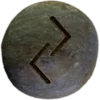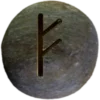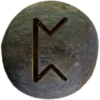Last Updated on January 2, 2025


Eldhrímnir (pronounced “ELD-hreem-neer”) is the sacred cauldron in Norse mythology. The Prose Edda, written by Snorri Sturluson, describes it as the vessel in which the godly cook Andhrímnir (pronounced “AHND-hreem-neer”) prepares food for the gods. The most notable meal cooked in Eldhrímnir is Saehrímnir (pronounced “SIGH-hrim-neer”), the ever-renewing boar. ![]()
Each evening, Andhrímnir places Saehrímnir in the cauldron. By the next morning, the boar magically regenerates, ensuring the gods never go hungry. This cycle represents endless sustenance, symbolizing the divine ability to maintain abundance even in times of challenge.
Eldhrímnir is central to the feasts held in Valhalla (Valhalla, pronounced “val-HALL-uh”), where warriors chosen by Odin prepare for Ragnarök. These warriors, known as einherjar (pronounced “AYN-her-yar”), partake in the meals from the cauldron, gaining the nourishment they need for eternity.
The cauldron reflects the resilience and cyclical nature of existence. It represents nourishment beyond the physical, reminding us of the importance of preparation and renewal. Eldhrímnir also showcases the Norse focus on harmony between resources, labor, and the divine. The myths honor not only the gods but also the tools and acts that sustain life.
Eldhrímnir holds a place of reverence in Norse storytelling. Its presence in Grímnismál (in the Poetic Edda) reinforces its importance in maintaining the gods’ strength and vitality.
Runes Associated with Eldhrímnir
The Elder Futhark rune Fehu (ᚠ, pronounced “FAY-hoo”) symbolizes wealth, abundance, and nourishment. This perfectly aligns with Eldhrímnir’s role in providing endless sustenance. ![]()
The rune Jēra (ᛃ, pronounced “YAY-rah”) represents cycles, renewal, and harvest. It reflects the regenerative nature of Sæhrímnir and Eldhrímnir’s connection to eternal abundance.
Its Importance to Asatruar
Eldhrímnir symbolizes the importance of preparation, nourishment, and cycles in life. It reminds Asatruar to honor sustenance and abundance.
The cauldron also inspires focus on renewal, teaching that even in scarcity, renewal and abundance can emerge with dedication.

